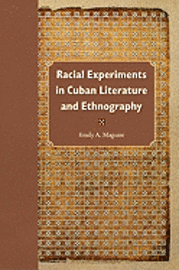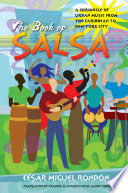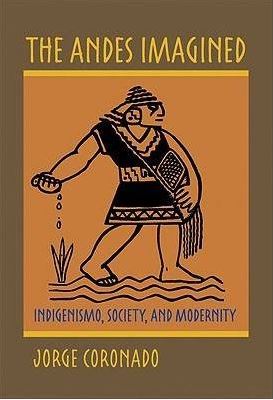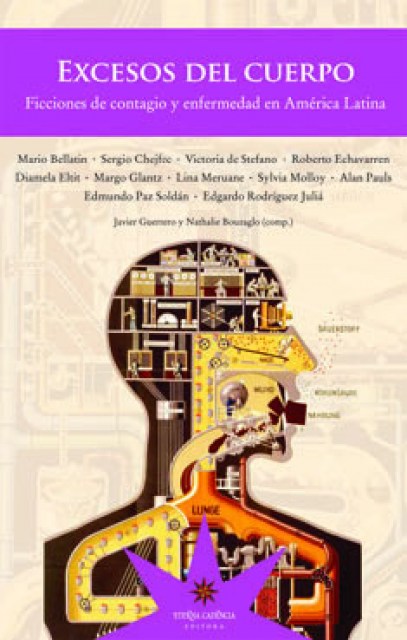Faculty Publications

O Jogo Narrado: um cruzamento linguístico-cultural da locução de futebol no Brasil e na França (The Game Narrated: A Linguistic and Cross-Cultural Analysis of Soccer Broadcasting in Brazil and France)
Ana Thome Williams
Publication year: 2013
The book was written for all kinds of audiences, such as those who like soccer and want to relive the World Cup of 1998 and the other cups, also for professionals, journalists for example, who are interested in better understanding the linguistic aspects of the language and its culture. There is a ritual to the Brazilian broadcast, of course, but the drama overcomes it. The opposite happens with the French broadcasting, where the ritual overcomes the drama. The book contains the history of the sport and of how it gained popularity after the invention of the radio and TV; a summary of all the Worlds Cup tournaments so far; an interview with Thierry Roland, famous French soccer announcer; and analyses of the sound, intonation, expressions and words used in Brazil and France and the difference between the spoken and written discourse in both countries.

Racial Experiments in Cuban Literature and Ethnography
Emily Maguire
Publication year: 2011
In the wake of independence from Spain in 1898, Cuba’s intellectual avant-garde struggled to cast their country as a modern nation. They grappled with the challenges presented by the postcolonial situation in general and with the location of blackness within a narrative of Cuban-ness in particular. In this breakthrough study, Emily Maguire examines how a cadre of writers reimagined the nation and re-valorized Afro-Cuban culture through a textual production that incorporated elements of the ethnographic with the literary. Singling out the work of Lydia Cabrera as emblematic of the experimentation with genre that characterized the age, Maguire constructs a series of counterpoints that place Cabrera’s work in dialogue with that of her Cuban contemporaries—including Fernando Ortiz, Nicolás Guillén, and Alejo Carpentier. An illuminating final chapter on Cabrera and Zora Neale Hurston widens the scope to contextualize Cuban texts within a hemispheric movement to represent black culture.
The Andes Imagined: Indigenismo, Society, and Modernity
Jorge Coronado
Publication year: 2009
In The Andes Imagined, Jorge Coronado not only examines but also recasts the indigenismo movement of the early 1900s. Coronado departs from the common critical conception of indigenismo as rooted in novels and short stories, and instead analyzes an expansive range of work in poetry, essays, letters, newspaper writing, and photography. He uses this evidence to show how the movement's artists and intellectuals mobilize the figure of the Indian to address larger questions about becoming modern, and he focuses on the contradictions at the heart of indigenismo as a cultural, social, and political movement.
By breaking down these different perspectives, Coronado reveals an underlying current in which intellectuals and artists frequently deployed their indigenous subject in order to imagine new forms of political inclusion. He suggests that these deployments rendered particular variants of modernity and make indigenismo'srepresentational practices a privileged site for the examination of the region's cultural negotiation of modernization. His analysis reveals a paradox whereby the un-modern indio becomes the symbol for the modern itself.
The Andes Imagined offers an original and broadly based engagement with indigenismo and its intellectual contributions, both in relation to early twentieth-century Andean thought and to larger questions of theorizing modernity.
Excesos del Cuerpo
Nathalie Bouzaglo
Publication Year: 2009
Con relatos de autores latinoamericanos de primer nivel como Mario Bellatin, Sergio Chejfec, Victoria de Stefano, Roberto Echavarren, Diamela Eltit, Margo Glantz, Lina Meruane, Sylvia Molloy, Alan Pauls, Edmundo Paz Soldán y Edgardo Rodríguez Juliá, Excesos del cuerpo propone un divertido y a la vez entrañable paseo por las afecciones del cuerpo y de la mente. Los relatos que conforman este volumen trabajan la representación del cuerpo, el contraste entre sus placeres y sus dolores, el sueño, la somatización y las limitaciones, pero también de las posibilidades, que abre un estado diferente al de la salud. Once escritores latinoamericanos exploran en esta antología distintas formas de narrar la enfermedad. Cuando hablamos de ella “acudimos a innumerables metáforas que la cargan de fantasías, juegos de poder e imaginarios”, señalan Javier Guerrero y Natalie Bouzaglo en la introducción, “la enfermedad es una suerte de pantalla en blanco sobre la que proyectamos miedos, terrores, paranoias, fobias y ansiedades”. Estos relatos –escritos especialmente para este libro– desnudan algunas de esas metáforas a través de ficciones tan provocadoras y estremecedoras como cómicas o conmovedoras. Desde una mujer que a causa de una enfermedad no recuerda a su amiga ni su vida pero puede en cambio traducir sus propios padecimientos, hasta la simbiosis enfermiza de una madre y su hija, pasando por un personaje que emprende un viaje en busca de su curación y termina en medio de un peregrinaje interminable, o una paciente obsesionada con el contagio presa en el sillón del dentista. Una oportunidad imperdible para contagiarse de ese virus sin remedio que es la literatura, junto a algunos de los escritores más importantes de la escena literaria contemporánea.

The Book of Salsa. English Translation of César Miguel Rondón’s El Libro de la Salsa
Frances Aparicio
Publication Year: 2008Salsa is one of the most popular types of music listened to and danced to in the United States. Until now, the single comprehensive history of the music--and the industry that grew up around it, including musicians, performances, styles, movements, and production--was available only in Spanish. This lively translation provides for English-reading and music-loving fans the chance to enjoy Cesar Miguel Rondon's celebrated El libro de la salsa.
Rondon tells the engaging story of salsa's roots in Puerto Rico, Cuba, Colombia, the Dominican Republic, and Venezuela, and of its emergence and development in the 1960s as a distinct musical movement in New York. Rondon presents salsa as a truly pan-Caribbean phenomenon, emerging in the migrations and interactions, the celebrations and conflicts that marked the region. Although salsa is rooted in urban culture, Rondon explains, it is also a commercial product produced and shaped by professional musicians, record producers, and the music industry. For this first English-language edition, Rondon has added a new chapter to bring the story of salsa up to the present.

Musical Migrations
Frances Aparicio
Publication Year: 2003
A dynamic and original collection of essays on the transnational circulation and changing social meanings of Latin music across the Americas. The transcultural impact of Latin American musical forms in the United States calls for a deeper understanding of the shifting cultural meanings of music. Musical Migrations examines the tensions between the value of Latin popular music as a metaphor for national identity and its transnational meanings as it traverses national borders, geocultural spaces, audiences, and historical periods. The anthology analyzes, among others, the role of popular music in Caribbean diasporas in the United States and Europe, the trans-Caribbean identities of Salsa and reggae, the racial, cultural, and ethnic hybridity in rock across the Americas, and the tensions between tradition and modernity in Peruvian indigenous music, mariachi music in the United States, and in Trinidadian music.

As promessas da história: discursos proféticos e assimilação no Brasil colonial (1500-1700)
Cesar Braga-Pinto
Publication year: 2003
Investigando cartas, relatos de viagem, documentos históricos, teorias pós-modernas da cultura e literatura canônica, César Braga-Pinto examina alguns dos momentos fundadores da cultura literária no Brasil Colônia, procurando explicar de que modo a contradição entre a esperança no futuro e a visão pessimista acerca da realidade assumiu diferentes formas. Por meio da leitura de textos dos séculos XVI e XVII, como a Carta de Pero Vaz de Caminha, os Autos de José de Anchieta, os textos de viajantes franceses e a História do Futuro do Padre Vieira, discute como a visão otimista dos discursos proféticos se relaciona à visão negativa da realidade com o objetivo de equilíbrio ou compensação.
Page 1 / 2 / 3


